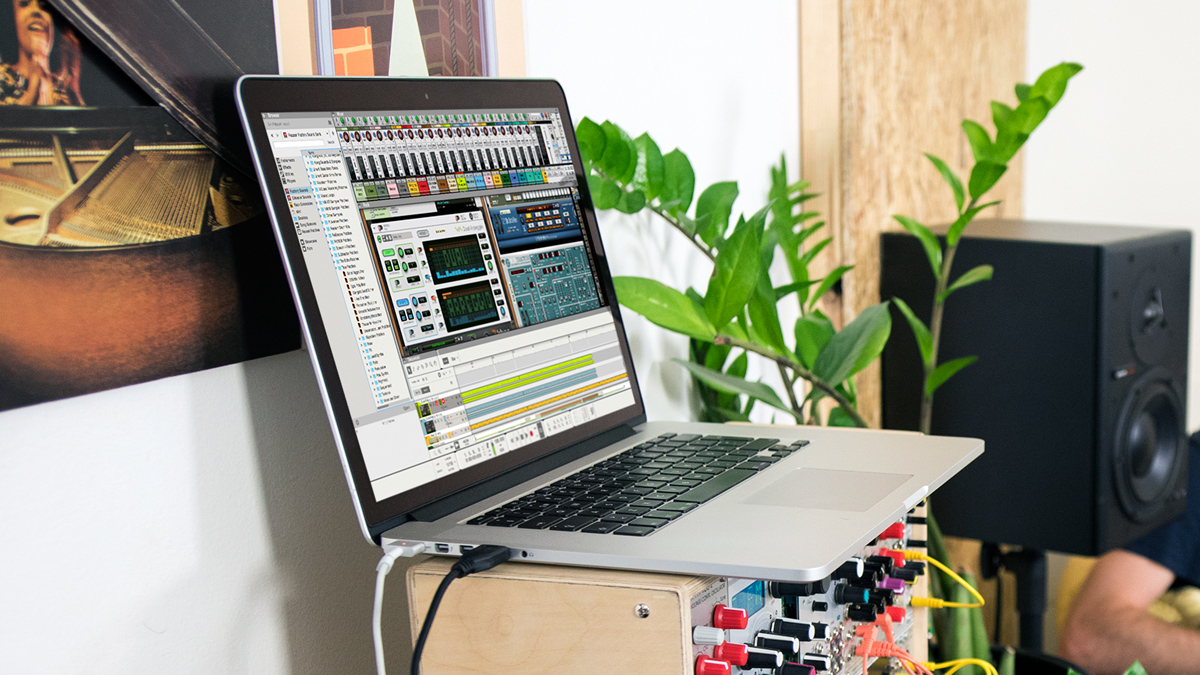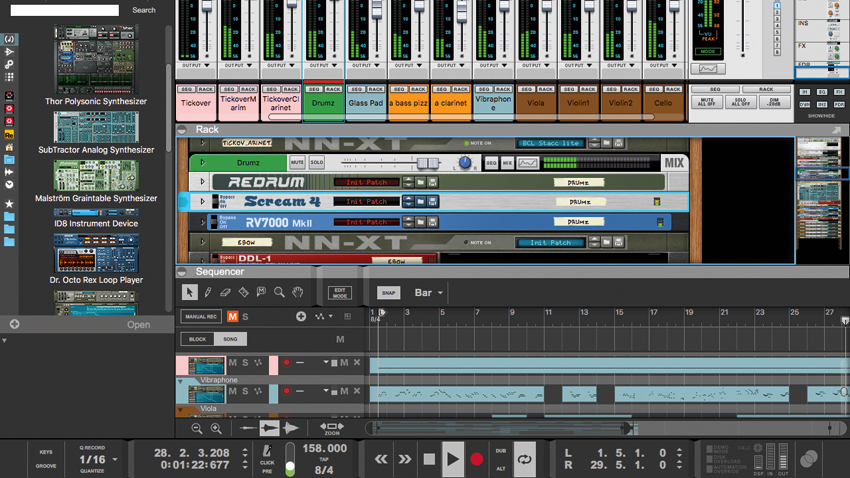6 ways to get more out of Reason 9
With Reason 9, Propellerhead has added plenty of empowering new features to its popular DAW. Here are some ideas for putting them to use

With so much new stuff in the latest version of Propellerhead's veteran virtual studio, you might be wondering where to begin your exploratory journey. Might we suggest you start with half a dozen premium grade MusicRadar tips?
For more on Reason 9's new features, pick up the March edition of Computer Music.

1. Now here's the theme
Night owls might want to take advantage of Reason’s new Dark Mode colour scheme, which is easier on the eyes in a dark environment. The Blue colour scheme, meanwhile, is a similar alternative for those who want something a little different. Each scheme is accessed in Reason’s Preferences menu, and they require a restart of the program to kick in.
2. Pulsar Dual LFO Rack Extension
Reason now comes with the Pulsar Rack Extension, which was previously a paid add-on for the DAW. Pulsar opens up the possibilities of the rack by adding modulation generators for use on anything that’ll accept them. You can connect Pulsar’s two LFO outputs to any input at the back of the Reason rack, giving you seriously expanded possibilities for modulation. It’s got the usual Rate and Level controls plus a choice of waveforms, and a nifty Envelope module built in, which can be set to be triggered by LFO2.
Perhaps the best thing about Pulsar, though, is the fact that the Rate control can be pushed up so high that it becomes an audible oscillator. With only a few synths in the rest of the rack, it can be a huge help in the sound generation stakes!

3. Closer to the edit
With the addition of Pitch Edit mode, audio clips can now have a few kinds of editing performed on them. Because of this, they’ve been separated in the sequencer. Three buttons appear at the top when you select an audio file, enabling you to select an editing mode. As well as Pitch Edit, there’s Slice Edit for stretching and warping, and Comp Edit, which you can use to access alternate recorded takes or create new ones.
4. Just your type
When stretching or pitching audio using Reason’s new features, you want a bit of flexibility. There are three ‘Stretch & Transpose Types’ accessible by right-clicking an audio clip: Vocal, All-round and Melody. Each offers a different analysis algorithm, which will function more or less accurately based on the type of audio being analysed.
Want all the hottest music and gear news, reviews, deals, features and more, direct to your inbox? Sign up here.
The icon at the bottom-right of the audio clip will change to correspond to the mode you select, and double-clicking it will open a different type of editor - Pitch Edit when the audio clip is designated as ‘Vocal’, for example. Another icon, not associated with the stretch type, indicates when the track has several takes available for comp editing.

5. MIDI slice 'n' switch
As audio and MIDI move ever closer to each other in terms of control, more functions have been added to make piano roll sequencer editing better. For example, the razor tool can now be used to shear MIDI notes in two, creating new note-on and note-off events. Whole selections of MIDI notes can now also be reversed, as can automation data.
6. Ableton Link onboard
Reason’s always been open to working with other software - witness its ReWire slave functionality, enabling integration with other DAWs - and now it's got Ableton’s Link technology baked in.
Rather than being an audio or MIDI routing protocol, Link lets you sync Reason 9's transport controls up to those of Ableton Live and many iOS apps. Set the devices and apps up, press play on one and all other connected Link-enabled platforms will play along in sync. Getting the output audio into Reason is another matter, though, as the technology was built with live performance and collaboration in mind.
Computer Music magazine is the world’s best selling publication dedicated solely to making great music with your Mac or PC computer. Each issue it brings its lucky readers the best in cutting-edge tutorials, need-to-know, expert software reviews and even all the tools you actually need to make great music today, courtesy of our legendary CM Plugin Suite.
